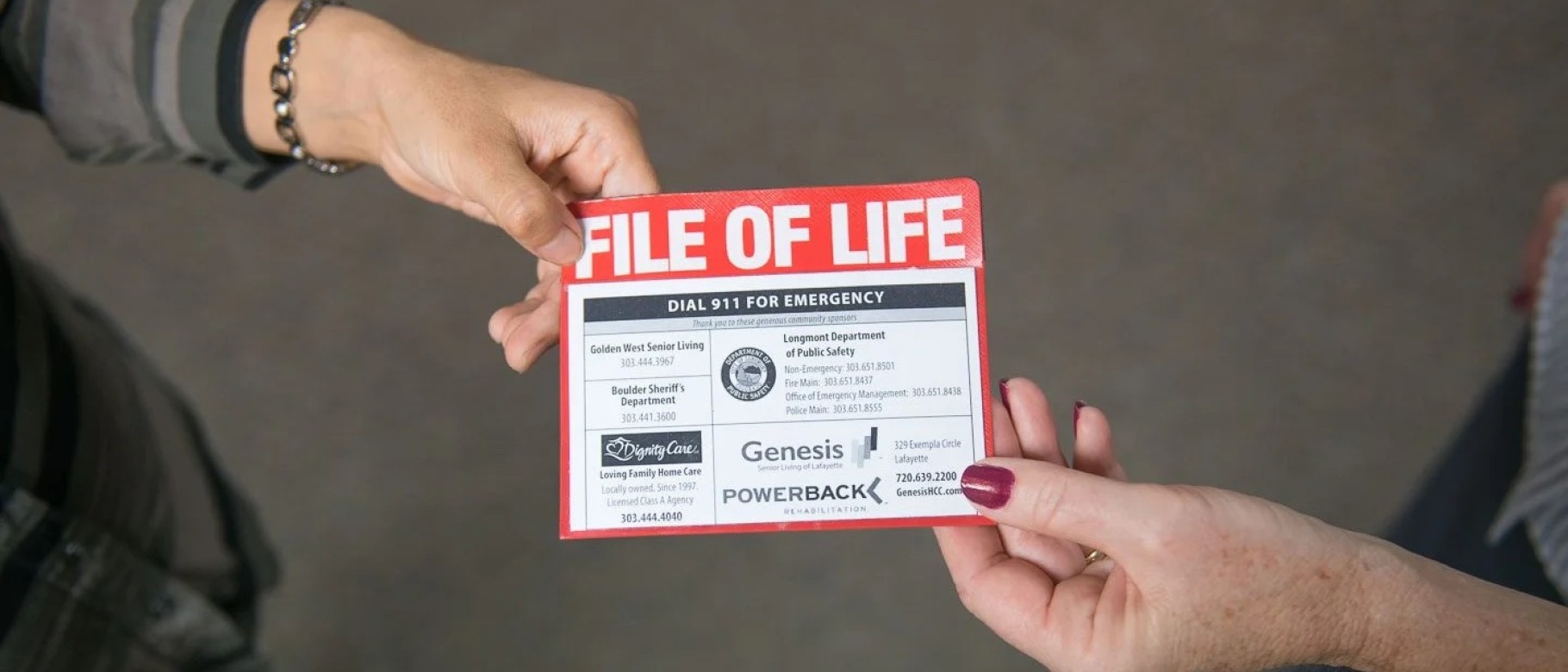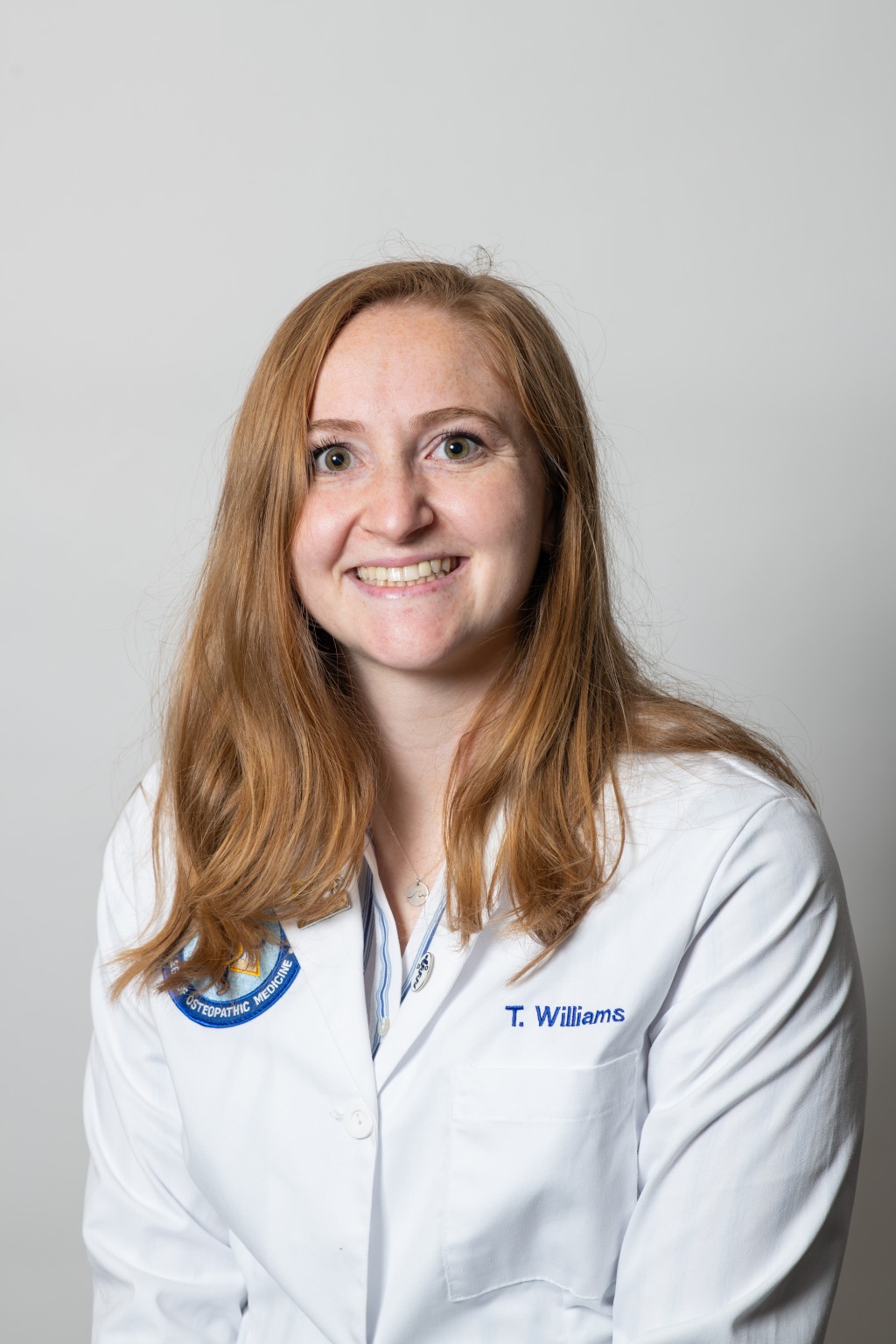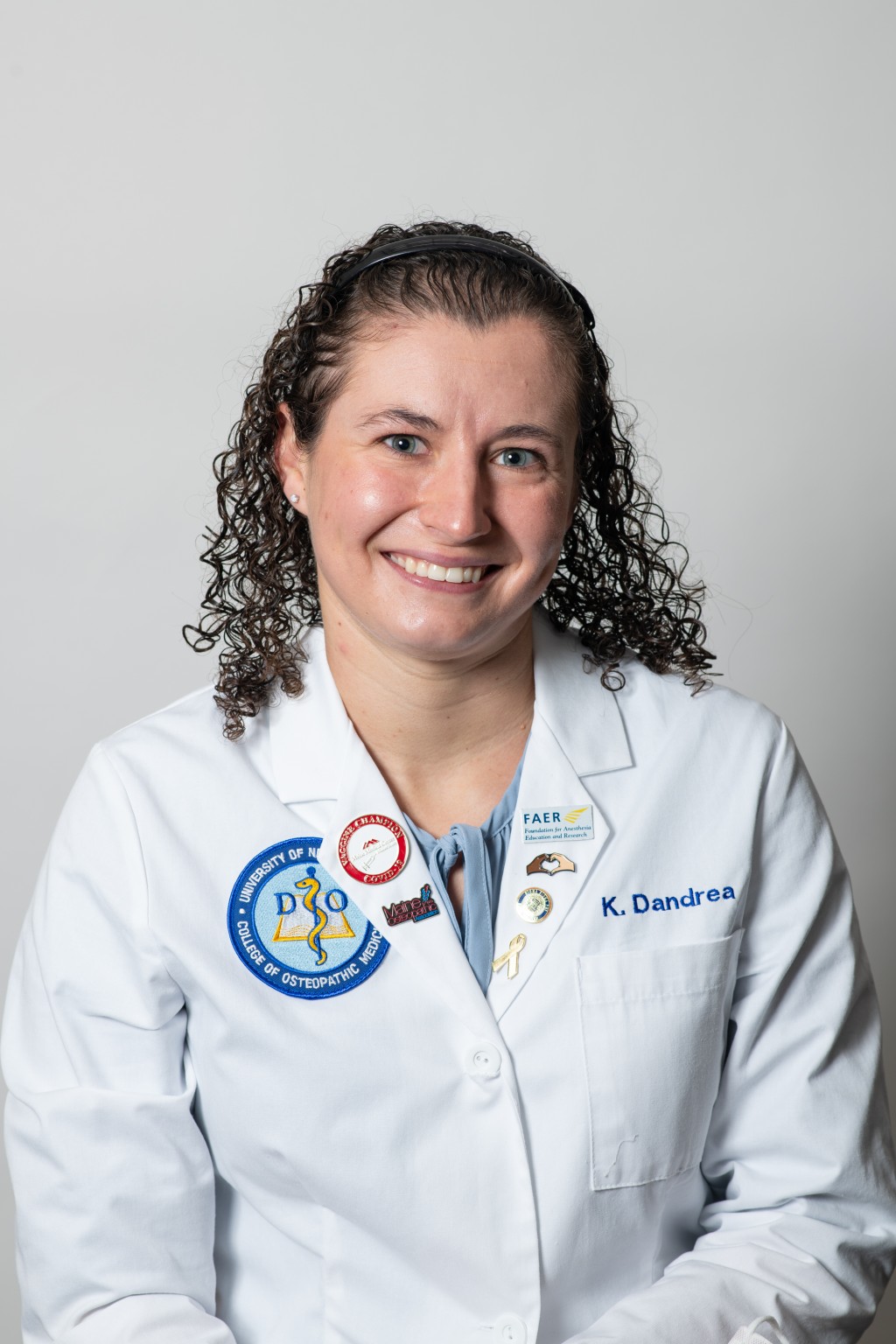Medical students’ research to enhance File of Life program will aid emergency responders

Research by two students in the University of New England College of Osteopathic Medicine (UNE COM) will soon allow first responders to better treat patients when responding to emergency calls.
Class of 2024 students Tess Williams and Kaye Dandrea have spent part of their time at UNE COM conducting qualitative research to improve the File of Life program, a widely adopted initiative that involves keeping a person's vital medical information in a visible and easily accessible location, usually on the refrigerator door. In emergency situations, first responders and medical personnel can quickly access this information — which takes the form of a pocket-sized questionnaire — to gain critical insights into a patient's medical history, allergies, medications, and emergency contacts.
The program has been successful since its implementation in 1995, now being used in nearly 20 million households across 7,500 communities. But conversations with File of Life users, particularly older adults, revealed that updates to the fact sheet would increase accessibility and readability for both patients and first responders.
Realizing that immediate access to accurate medical data is crucial during emergencies, Williams and Dandrea decided to explore ways to streamline and improve the process.
“We interviewed both older adults in our community to get their perspective and then did a separate project for emergency medical personnel to make sure it suited both groups’ needs,” said Dandrea. “We found global changes to the questionnaire that would make the file more accessible for all.”
The two developed a prototype for an improved File of Life document incorporating recommended changes based on their conversations with users. Such changes include increasing the font size for readability, adjusting language to make it clearer and more concise, adding increasingly common medical conditions to the checklist, and simplifying portions of the file related to recent surgeries and procedures, among other upgrades.
Williams, a former emergency medical technician (EMT), noted that a section for a patient’s advanced directives — such as “do not resuscitate” — was not immediately visible to first responders, so the duo moved it to the top.
“When going to a call, knowing advanced directive information is so important; it is literally life and death,” she said. “We brought advanced directives to the top and made the section prominent, so first responders know to keep an eye out for it in the paperwork.”
The two medical students’ efforts have garnered attention from the File of Life organization itself as well as local emergency responders.
“Some of the changes that were made based on Kaye and Tess’s study were our most requested changes to the File of Life paperwork,” said Mollie McGurk, operations director at File of Life. “Having UNE COM as a resource for the program is extraordinary. It's really just invaluable for us.”
Matthew Sholl, M.D., M.P.H., FACEP, an emergency department physician at Maine Medical Center and medical director of Maine Emergency Medical Services (EMS), said the students’ work will benefit emergency personnel during life-or-death situations.
“Maine EMS aims for excellent, patient-centered communication during every EMS encounter,” Sholl said. “Tess and Kaye’s project will help the approximately 5,000 EMS clinicians who make up the Maine EMS System meet this goal by ensuring proper information is shared throughout a person’s health care encounter and empowering medical decision-making during the EMS interaction, and beyond, into the hospital encounter.”
Williams and Dandrea’s work is being done through student research fellowships funded by the College of Osteopathic Medicine.
The goal of such fellowships is for students to work side by side with medical professionals and health care leaders to improve patient outcomes and better the health of communities, said Marilyn Gugliucci, M.A., Ph.D., professor and director of geriatrics education and research in the Division of Geriatrics.
“Guiding student doctors Dandrea and Williams to apply their many skills in a focused project to create grassroots change for community-dwelling older adults and first responders was a perfect project for all,” said Gugliucci, who mentored Dandrea and Williams throughout their research. “As aspiring osteopathic physicians, working directly with both older people and EMTs to learn what matters most to them in this project provided a platform for mindful decision making to create an outcome that improves patient care and provider support.”
Dandrea and Williams also expressed gratitude to UNE COM for providing a unique research opportunity — one that got them out of the lab and working with real patients.
“I’ve done research in the past that has been more academically focused, focused on publication, and you don’t always see where that goes,” Dandrea remarked. “It’s been great to interact with members of the community and get the perspective of how this resource will actually be used by people.”
While echoing Dandrea’s sentiments, Williams added that quantitative research is often preserved as “better” but is just as important.
“Whether it be updating forms like our project or updating policies, listening to a consumer’s, patient’s, or employee’s idea is where some of the most innovative ideas originate,” she said.

